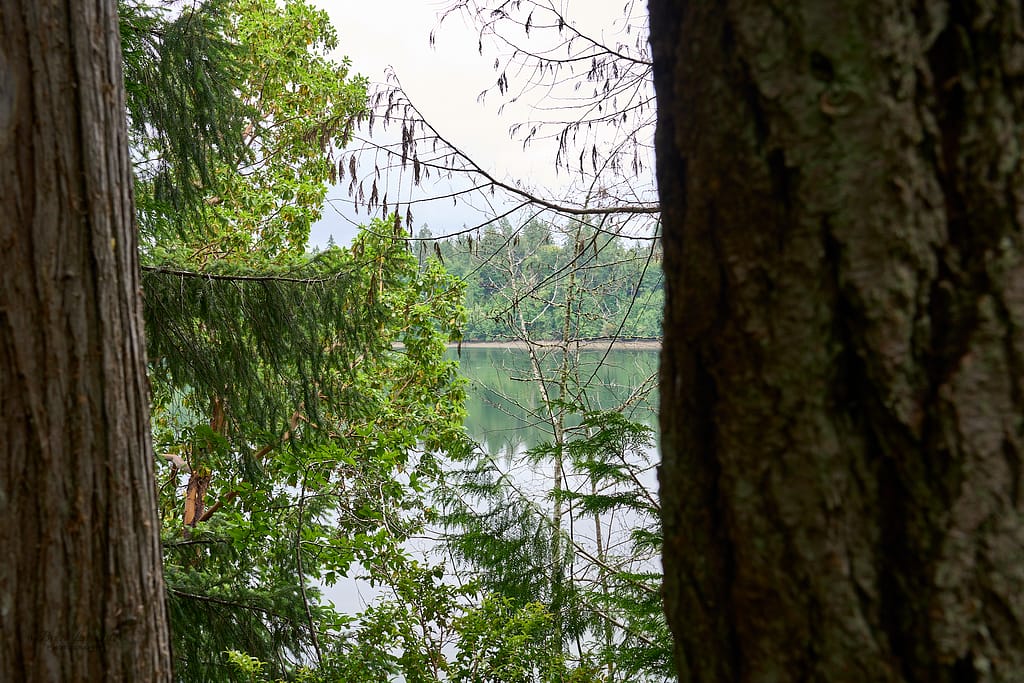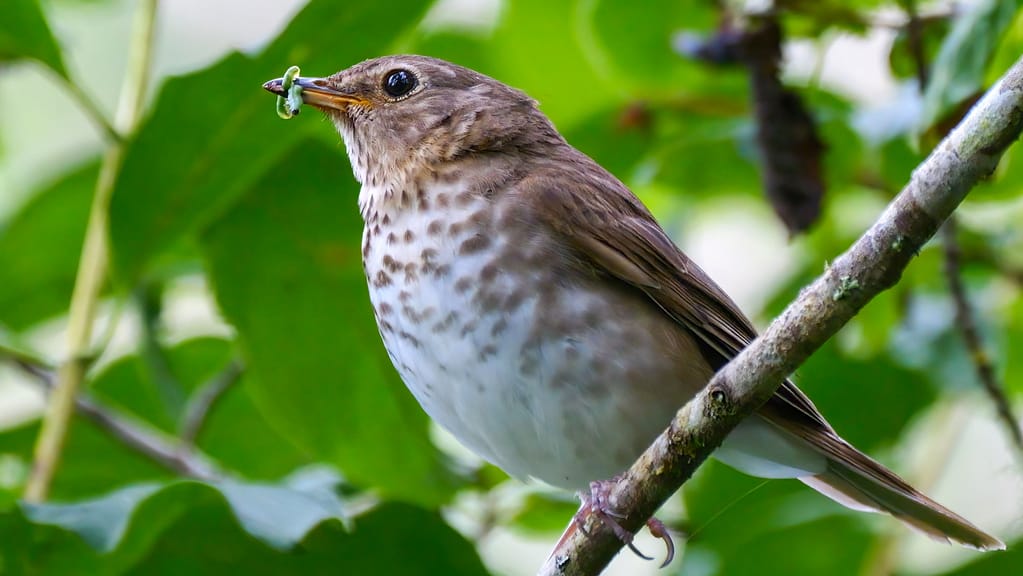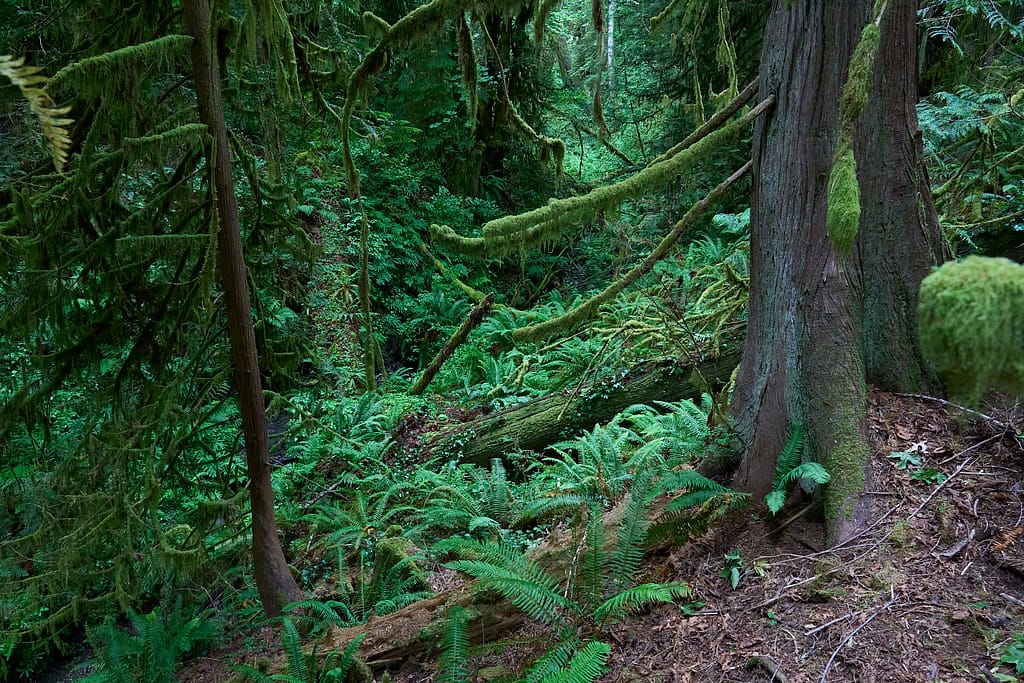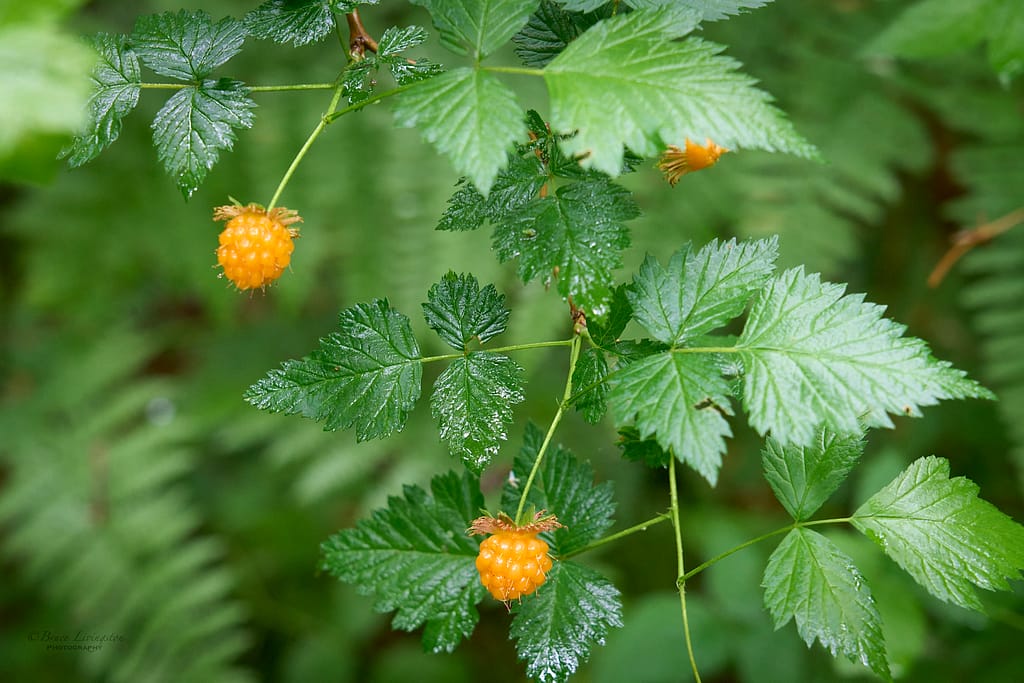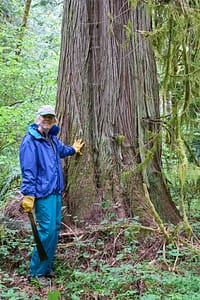It is a late June morning after a brief spring shower and Barb Crowell’s property on Hammersley Inlet smells sweet with budding foliage and damp, warming earth. Her pristine 22-acre parcel is dense with towering, hundred-year-old western redcedars surrounded by sword ferns and bordered by tidelands. After 33 years of visiting the property with her late husband, Dave, Barb has decided to donate it to Capitol Land Trust (CLT).
“Dave and I would walk the trails and picnic at the beach during low tide,” Barb says. “I have really come to love this land.”
As we walk along the very trails she would traverse with Dave, Barb tells me she grew up as a city girl, but really became connected with nature when she moved to Montana. She purchased this property as an investment when she was in her 30’s and it provided her with an escape from the bustle of everyday life.
“I had a dream of building a log cabin near the shore,” she says.
- Hammersley Inlet is visible between the trees, Bruce Livingston.
She led the way under a canopy of variegated shades of green to a steep gulley with clear freshwater flowing toward Puget Sound. When asked why she chose to donate the land for conservation, she says, “It was important to me to leave a legacy with a lasting impact.”
Many landowners eventually face the choice of selling their land, keeping it in the family or conserving it. Barb faced the same choice. “When I realized I could live out the rest of my life with the assets I had, I knew I had to conserve it,” Barb says. “I wanted to leave behind a place for wildlife, trees, and ecosystems to thrive in perpetuity.”
After moving a bit further into the property, Barb stops suddenly, her head slightly cocked. “Did you hear that?”
We listen. Moments later the iconic song of a migratory bird called a Swainson’s thrush rises from the dense vegetation. “That’s my favorite bird,” Barb says. “Now that I know there is a Swainson’s thrush here, I’m confident I did the right thing by conserving this land.”
- Swainson’s thrush perched on a branch with a bug in its beak, Mike Melton.
These light brown and white breasted birds, about the size of an American robin, travel to Puget Sound from Mexico, Central and South America. Their song is reminiscent of flute notes spiraling upward. Their “waterdrop” chip notes, peeps, and flute duets continued as a kind of soundtrack to the rest of our walk through the property.
Because of its ecological value, this property acquisition is an important conservation success. The new Crowell Preserve is situated within the same watershed as three other major CLT conservation areas. It features just over 20 acres of upland western redcedar and Oregon ash forests, tidelands, a perennial stream and 400 feet of shoreline along Hammersley Inlet, which connects Oakland Bay to the rest of Puget Sound. It adds to a growing network of 640 acres and three miles of Puget Sound shoreline already conserved by CLT on Oakland Bay.
The Swainson’s thrush isn’t the only species benefiting from the conservation of this property. The mature trees, arched hazelnuts and other native shrubs provide wildlife habitat and sequester carbon from the atmosphere. The perennial stream meets the saltwater of Puget Sound in Hammersley Inlet, which forms a small estuary and contributes to clean water upon which local businesses and communities depend.
- A perennial stream flows through a steep gully, Bruce Livingston.
Oakland Bay has been identified as a high priority for salmon recovery. Chum, coho, steelhead, coastal cutthroat trout use the marine nearshore habitat along Hammersley Inlet as they migrate. Oakland Bay and Hammersley Inlet are the most productive areas for manila clams in Washington State. And the Crowell Preserve now conserves and protects 1.6 acres of rich tidelands for manila clams, making it possible for the Squaxin Island Tribe to continue their regular customs and shellfish harvests here. Migratory waterfowl, shorebirds, and marine mammals like orcas also call Oakland Bay home.
For CLT, conservation is about more than acquiring land. It’s about restoring and preserving natural systems that sustain South Puget Sound’s plants, animals, birds and sea life. Due to its pristine nature and relative lack of invasive species, the new Crowell Preserve will require minimal restoration work. Now, each season of growth and each trickle of water will continue to contribute to healthy water quality, wildlife habitat, and the natural beauty of Oakland Bay.
- Salmonberry, Bruce Livingston.
Every acre CLT conserves helps reverse habitat loss and provides permanent homes for nature’s residents. The compounding effect of land donations by people like Barb makes a significant and permanent difference to the health of our lands, waters, and biodiversity.
Barb says, “Donating my land to CLT is a small piece of the puzzle that will deliver huge benefits for the community and the environment for generations to come.”
Thanks to her commitment to conservation, Crowell Preserve will continue to be a place called home for wildlife well into the future.
- Barb Crowell donated 22 acres to Capitol Land Trust, Bruce Livingston.


